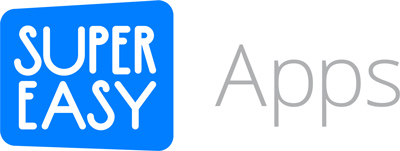Would my use case warrant the speed?
Part of my testing was a little subjective based on the perceived performance in Final Cut Pro. Opening projects on any of the Thunderbay drives was very fast (1-2 seconds) versus the WD Thunderbolt Duo (4-5 seconds). Everything from video thumbnail previews as I worked with video felt faster with the newer drives (including the Mac Pro's internal Flash storage).
When I compared the two Thunderbay 4 external drives it didn't feel like there was a major difference between RAID 5 SSD versus RAID 5 HDD. Scrubbing and importing felt just as fast with the 1080p videos I was using. The difference between the RAID 5 SSD and RAID 0 SSD was also hard to tell – both felt fast.
RAID SSD might make more sense for videographers who are working with large 4K projects, who would be working with huge video files. I found that the majority of my work with 1080p was good enough on any of the Thunderbay 4 external drives.
In my tests the Thunderbay drives performed at a 5x difference from my original WD Thunderbolt Duo, which was a welcome change.
Do I need more space?
Another bigger question was if the 4 TB drive in RAID 5 would be big enough. I’m really looking for a place to backup my course content videos that would offer fast access. At the rate I was creating video files, it started to feel that a 4 TB drive in RAID 5 might feel a little small to quickly. In RAID 5 you’ll lose 25% of the space, so that meant there would only be ~3 TB on the SSD version (maximum) and ~9 TB on the HDD version.
If space is a concern, it seems like you’d want to go bigger. Thunderbay drives can be daisy chained together, but my current focus is on a single drive purchase. More drives would create more noise as well.
Is it quiet?
Any of these multi-drive external enclosures are going to create some kind of noise. I found the Thunderbay 4 Mini to be quieter, but not as quiet as my Mac Pro 2013 or my older WD My Book Thunderbolt Duo.
The Thunderbay 4 with HDD drives was a bit louder, and it’s fan also made more noise. I’m not sure I’d call it whisper quiet, but I guess that term should give you an idea that it’s on par with someone whispering. It wasn’t nearly as quiet as I was hoping for.
I work with high quality microphones for my recording studio, so they can pick up any noise that I can hear. I’ve settled on turning off most of my external drives while recording videos. Ejecting the drives and unplugging the Thunderbolt cable or turning off the power on the Thunderbay 4 did the trick – ultra quiet.
Sound Test
I recorded around 10 seconds of audio with the ambient room noise, which gives you a baseline for the noise in my office. I used my iPhone 6+ to record the audio with the Voice Memos app.
It's hard to demonstrate how a device sounds, since the sound from your speakers is going to be different depending on the speakers, sound level, and recording device I used. I tested these sound clips side by side with the devices to gauge what they sounded like.
1. Listen at 50% volume on the iPhone/Mac to get a similar sound to my office.









